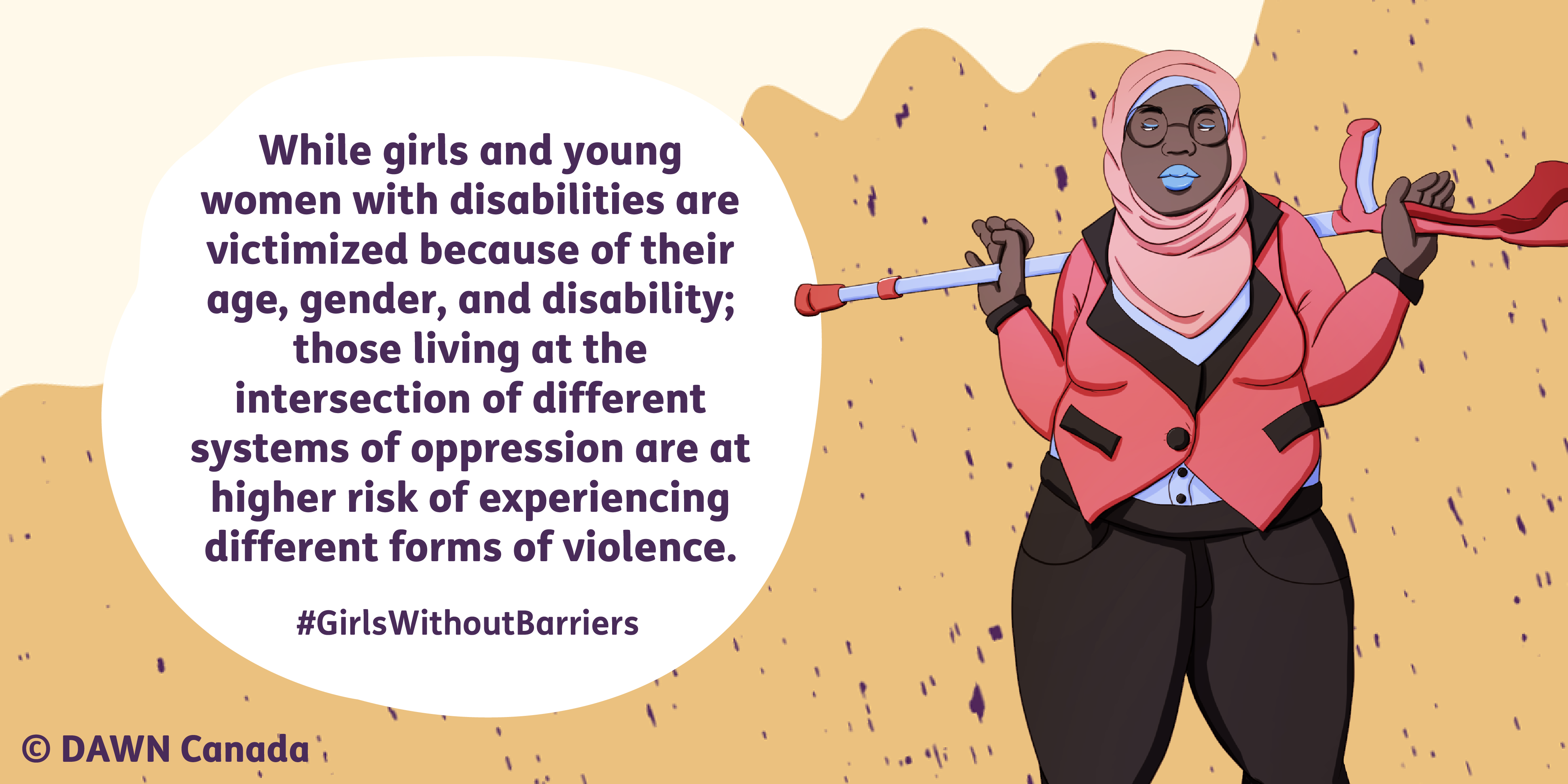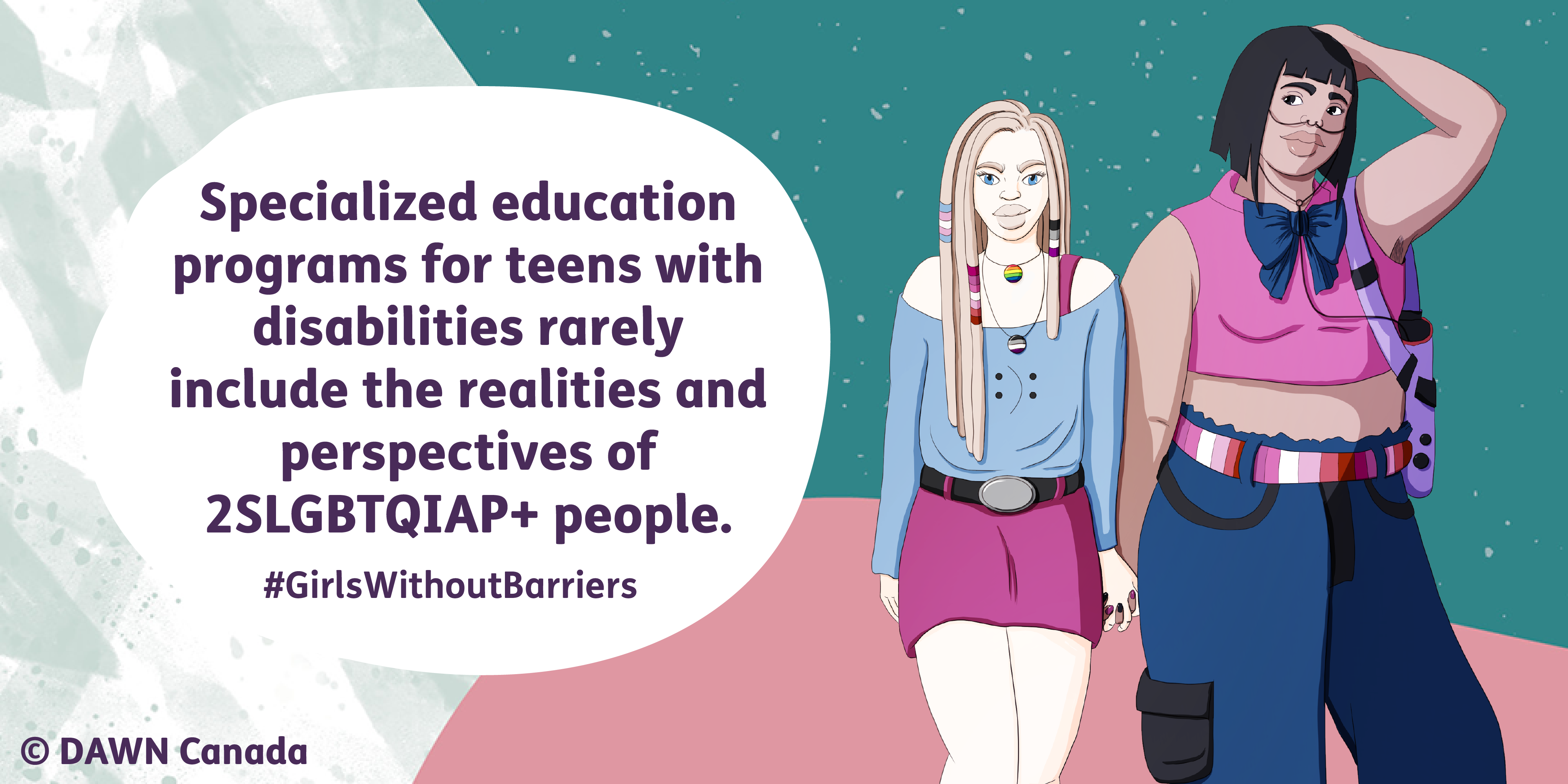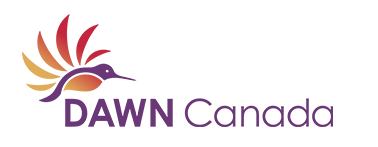#DayOfTheGirl Blog
Nelly Bassily, our Director of the Youth Initiatives and International Relationships and project lead of the Girls Without Barriers Research Report took some time to write this piece about the report, published in May 2020.
.png)
Girls Without Barriers research report came about because DAWN Canada released a report called More than a Footnote in March 2019. The report demonstrated that women with disabilities are among the most marginalized in Canadian society. What that concretely means is women with disabilities face multiple barriers to accessing things like employment, health services, sexual and reproductive rights, and are also more at risk of experiencing gender-based violence. But what that research also showed is the lack of data about girls with disabilities. So, the Girls Without Barriers research report is a first step to bridge that gap. Over the course of this research, we found it difficult to access Canadian statistics about girls with disabilities. The Girls Without Barriers research report set out to not only review literature that already exist in the form of academic articles, and community/activist-produced reports on the rights of girls and young women with disabilities but it also intentionally set out to better understand the realities of girls and young women with disabilities who not only have to deal with ableism as a system of oppression but also racism, colonialism, sexism, heteropatriarchy and other system of oppression as they intersect and affect their lives.
This report is an exploratory research project. It is a first step towards the development and support of qualitative studies carried out by and for girls and young women with disabilities in Canada.

While we have taken care to cite data reflecting the multiplicity of experiences lived by girls and young women with disabilities, this report does not purport to encompass all of their experiences.
And this is why today, with the Girls Without Barriers research report, we are effectively putting a spotlight on the living conditions of girls and young women with disabilities now and for the future. This report is part of a larger project, led by DAWN Canada, also called Girls Without Barriers. Funded by the Canadian Women's Foundation, the Girls Without Barriers project aims to change the culture within girl-serving organizations by promoting careful, diligent and thorough inclusion of the needs of girls with disabilities and Deaf girls.
We were also honored that the artist Kay Nau accepted our invitation to illustrate our report. Their illustrations demonstrate an extremely meticulous work in terms of representation, that put in images girls and young women with disabilities in all their complexities, their strengths and their resilience.
Regarding the research report, here are some important highlights:
- Firstly, we want to highlight the lack of studies and statistical data available in Canada to better understand the living conditions of girls and young women with disabilities.
- We note that despite the international commitment (by ratification) of the Canadian government to respect and apply human rights, girls and young women with disabilities remain underrepresented in legal and political spheres.
- We note that there is a lack of Canadian studies and statistical data on violence against girls and young women with disabilities in Canada which would allow us to understand the extent of the phenomenon. Different research and international reports allow us, however, to identify that girls and young women with disabilities are one of the groups most at risk of being victimized.
- We also note in the report the increase in the incarceration of young women with disabilities. Through a normative, ableist, sexist and racist school system, we find that racialized girls and young women with disabilities are particularly affected by this problem. We also highlight in our report, the conditions experienced by girls with precarious immigration statuses in detention centers. Imprisonment linked to immigration affects girls and young women who are migrants and without status. The Canadian Council for Refugees denounced the presence of children in detention centers. In 2018-2019, according to the CCR, Canada detained more than 118 children. These children, who were criminalized because of their migratory status, were also found to be detained in traumatic environments. An open letter signed by more than 2,000 health care professionals in Canada stresses that these conditions of detention will have negative consequences on the health of these children, and could result in the creation of disabilities in children in the long term.
- The report also puts a spotlight on Indigenous girls and young women with disabilities living on reserves (located far from major urban centers) who have to deal with the daily colonial and racial discrimination that contribute to hampering their lives and their development.
- The report highlights that girls and young women with disabilities face obstacles in accessing inclusive and empowering sex education. Their sexual and reproductive rights are limited and their gender identities and sexual orientations are seldom respected. Given the various data we have collected, we also know that girls and young women with disabilities facing different systems of oppression are at higher risk of having their reproductive rights hampered and of being sterilized without consent.

- The literature specifically relating to youth with disabilities who identify as 2SLGBTQIAP+ (Refers to two-spirited, lesbian, gay, bisexual, trans, queer, intersex, asexual / aromatic, pansexual and more) denounces, among other things, the imposition of heteronormative standards when it comes to gender identity and / or sexual orientation.
- Access to education is a right that is particularly reduced for girls and young women with disabilities living in Canada. Studies show that many school spaces remain inaccessible. Accommodation problems thus limit their access to new knowledge, to the development of their full potential and also the possibility of creating and strengthening relationships.
- The participation of girls and young women with disabilities in leisure and sports activities have significant positive effects on their self-esteem. However, the report shows that despite the importance of their participation in these activities, girls and young women with disabilities remain underrepresented. Accessibility is still a major barrier, and our collaborations to make programs for girls more inclusive show us that a tremendous amount of work still remains to be done in creating more awareness about what ableism is and how it functions in order to better serve the needs of girls and young women with disabilities.
- And the final highlight I’m going to mention is how girls and young women with disabilities are often isolated, which hampers their ability to build social circles and emotional ties. Our work has allowed us to show that spaces that allow girls and young women with disabilities to forge such links are particularly important.

The Girls Without Barriers project has been funded for another four years until 2024 and in that period, we plan to do qualitative research that directly allows us to hear the direct experiences of girls with disabilities and Deaf girls.
